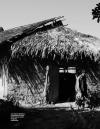Abstract
AbstractThis study intends to demonstrate the relationship between the constructions made by Azorean settlers soon aftertheir arrival to the island of Santa Catarina located in southern Brazil, and the technical and architectural forms of thenatives adopted by them. Darcy Ribeiro (1999) mentioned the indigenous acculturation phenomenon on behalf of thegroup of settlers in her book O Povo Brasileiro, The Brazilian People. This paper aims to offer an in-depth study of theconsequences brought specifically to architecture. A special mention must be given to the walls of wattle and daub;the technical component that was best incorporated in the colonizer’s building culture and which has endured untilthe present day. In regard to the form of native architecture, it is good to remember that it has remained unchangeddespite the substitution of materials by newer ones over time. The paper pretends to deliver a contribution to theconsolidation of Brazilian identity and aknowledgement of the spatial occupation made in the area.Apuntes is registered under a Creative Commons Attribution 4.0 International Public License. Thus, this work may be reproduced, distributed, and publicly shared in digital format, as long as the names of the authors and Pontificia Universidad Javeriana are acknowledged. Others are allowed to quote, adapt, transform, auto-archive, republish, and create based on this material, for any purpose (even commercial ones), provided the authorship is duly acknowledged, a link to the original work is provided, and it is specified if changes have been made. Pontificia Universidad Javeriana does not hold the rights of published works and the authors are solely responsible for the contents of their works; they keep the moral, intellectual, privacy, and publicity rights.
Approving the intervention of the work (review, copy-editing, translation, layout) and the following outreach, are granted through an use license and not through an assignment of rights. This means the journal and Pontificia Universidad Javeriana cannot be held responsible for any ethical malpractice by the authors. As a consequence of the protection granted by the use license, the journal is not required to publish recantations or modify information already published, unless the errata stems from the editorial management process. Publishing contents in this journal does not generate royalties for contributors.


